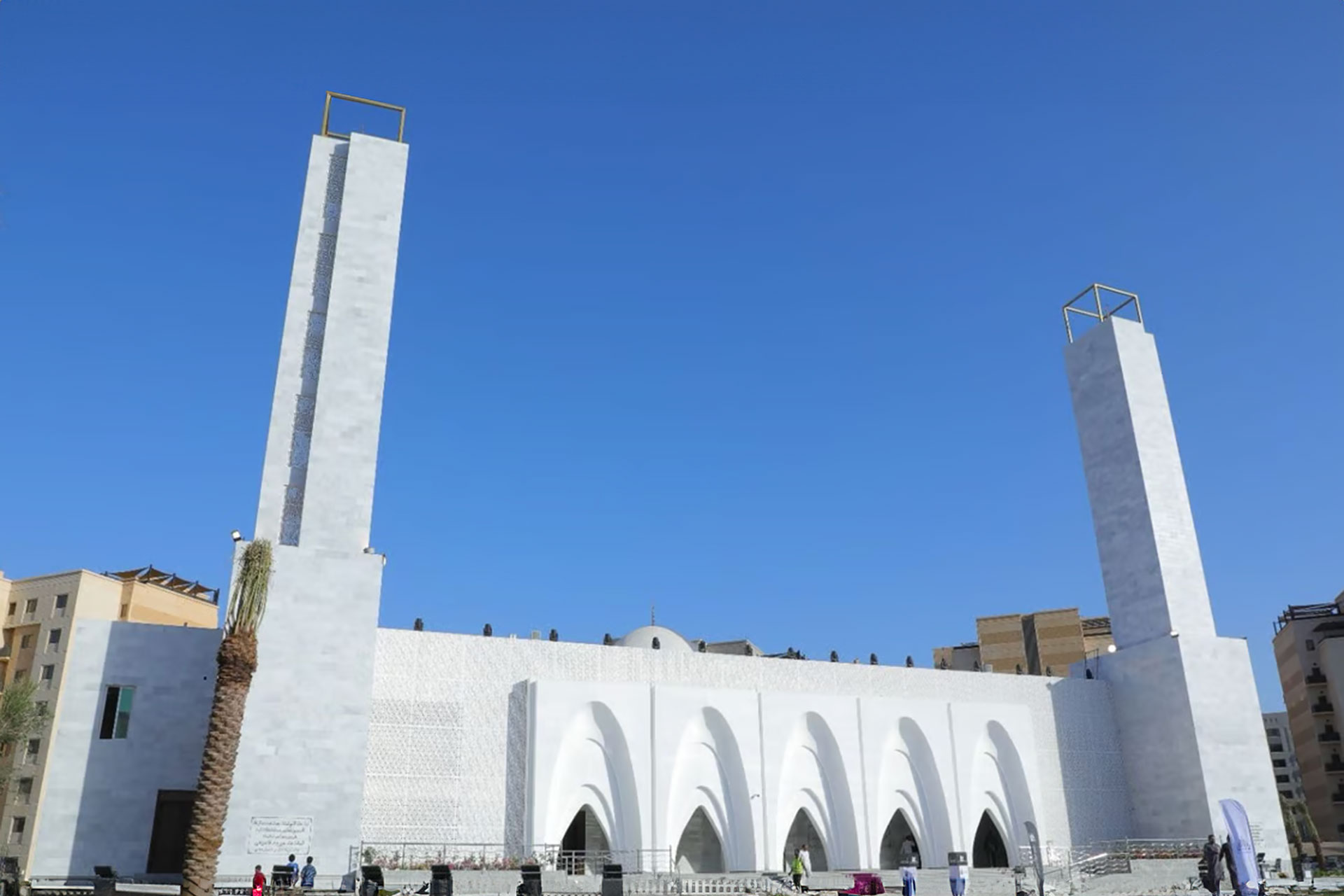The opening of the first mosque in the world built with 3D printing technology in Jeddah Governorate, Saudi Arabia (social networking sites)
The city of Jeddah, Saudi Arabia, witnessed the opening of the first mosque in the world built using 3D printing technology, which is one of the latest fourth-generation construction technologies, on an area estimated at 5,600 square metres.
According to local Saudi newspapers, the Al-Aziz Sharbatly Mosque, which was built within the “Al-Jawhara” project in Jeddah Governorate, was opened yesterday, Wednesday, March 6, 2024, 6 months after the start of the construction process.
Read also
list of 4 itemslist 1 of 4
A device from General Electric to save American soldiers from thirst
list 2 of 4
With 3D printing technology, an Italian electric car startup offers a small car for cities
list 3 of 4
How can modern technology help rebuild cities destroyed by war?
list 4 of 4
Using artificial intelligence... finger joints with 3D printing technology
end of list
The mosque was built using four 3D printers, and its construction was supervised by the Chinese company Guanli, the world's leading manufacturer of 3D printers.
Dubai announced its intention to build a mosque using 3D printing technology on an area of 185 square metres, with a capacity for 600 worshipers, with work to be completed in the first quarter of 2025.
At the level of Saudi Arabia, the Al-Aziz Sharbatly Mosque was preceded by Aramco’s construction of the first concrete industrial building using 3D printing technology in the Al-Hawiyah area in the Taif Governorate of Makkah Al-Mukarramah in March 2023, which reached a height of 3.85 meters and an area of 63 square meters.
The construction of the building was completed in a record delivery time with a printing speed of 100 millimeters per second on a fixed printer that can print on an area with dimensions of 7 meters in length, 4 meters in width and 4 meters in height.
In January 2022, Riyadh announced the success of the experience of building the first house using 3D printing technology, on the Ministry of Housing’s land, west of King Khalid International Airport in Riyadh, through the Dutch company CYPE.
For construction, 3D printing technology is a digitally controlled machine that mixes raw material components and industrial additives, and molds them to form the general structure of the building or any of its elements.
The process is carried out according to the plans and dimensions entered into the electronic programs of this printer, without the need for direct human intervention or the use of molds during the formation process, as is the case in the traditional concrete pouring process.
3D printing...what does it mean?
3D printing can be defined as the process of converting a digital model or design into a tangible physical product, by adding, combining, and solidifying many successive layers of material.
The description of 3D printing appeared for the first time in a science fiction story in the 1950s, became a reality in the 1980s, and turned into a common technology in the current century after accuracy increased and the materials used diversified.
In 1981, the first notable patent related to the idea of 3D printing appeared, titled “Rapid Prototyping Device,” while Chuck Hull coined the term “stereolithography” in 1984 by applying for a patent that was granted to him in 1986.
In the 1980s, the price of a 3D printer reached more than $300,000, but over time, prices became affordable for small businesses.
The use of this type of printer in the construction field began in 1995, in the hope of reaching a faster and less expensive method for construction.
In 2015, a villa and a tower were constructed that combined 3D-printed components, and in 2016 Spain unveiled a 3D-printed pedestrian bridge 12 meters long and 1.75 meters wide.
In May 2023, Ukraine announced the construction of a school using 3D printing technology, using an automated device measuring 12 x 15 meters that pours concrete in layers.
The head of the project, Yevgeny Toba, said, "Construction here differs from the traditional method, especially in the composition of the mixture and the ratio of the components is completely different, sand, water and cement. This type of construction can reuse the remains of buildings destroyed as a result of bombing, to produce raw materials for construction."
In 2021, the town of Massa Lombarda, Italy, witnessed the first 3D printed house made of clay called “Takla”.
3D printing...a rapidly developing reality
According to experts, 3D printing with natural materials may constitute an important development, as Europe works to achieve its goal of climate neutrality by 2050.
According to a report issued by UN Environment and the International Energy Agency in 2020, building and construction are responsible for 38% of all carbon emissions in the world.
The value of 3D printing products and services in the global market in 2020 amounted to about $12.6 billion, and the market size is expected to nearly triple between 2020 and 2026.
3D printing is now a rapidly developing reality, being used in a wide range of sectors, including the aviation industry, the automotive industry, the medical sector, the military industry, and even the food industry.
The high costs of the technology represent the biggest problem for ordinary users, as they prevent it from being used more widely, in addition to the low quality of the printed parts being another major reason for not using it more widely at the present time.
Source: Al Jazeera + websites

